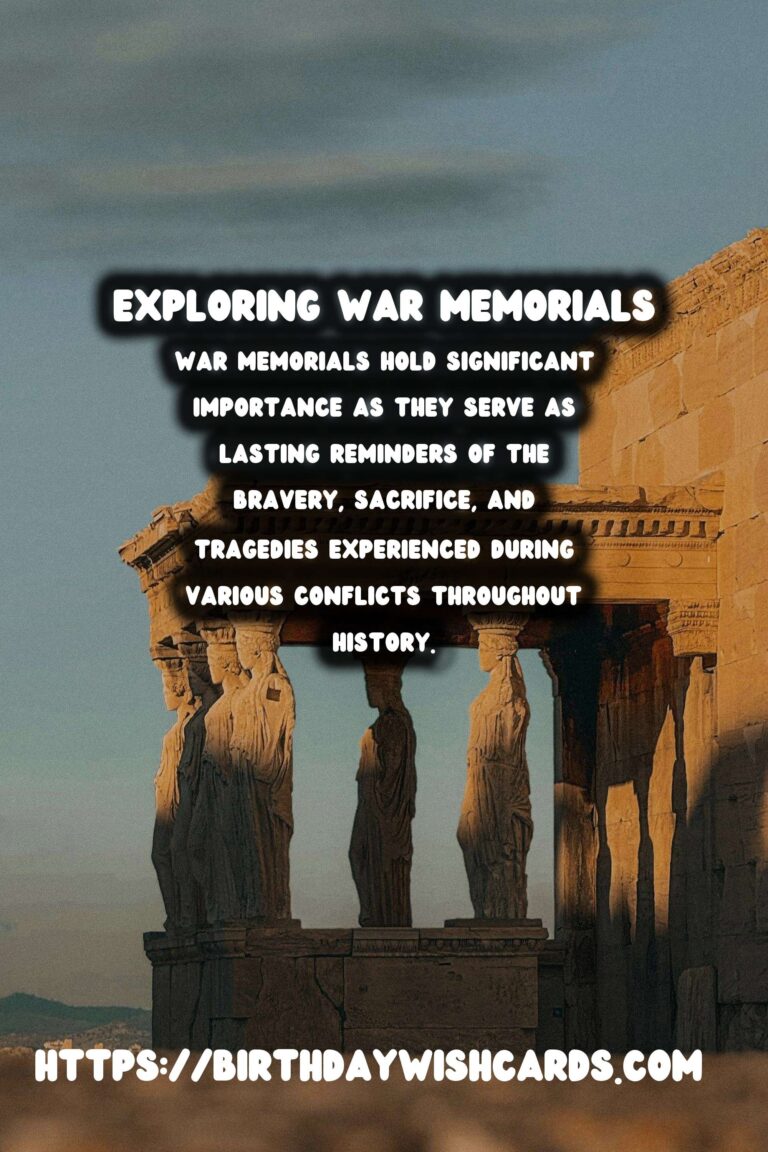
War memorials hold significant importance as they serve as lasting reminders of the bravery, sacrifice, and tragedies experienced during various conflicts throughout history.
The Purpose of War Memorials
War memorials are constructed to commemorate those who served and died in military conflicts, providing a place for reflection and remembrance. These monuments remind us of the past sacrifices and the heavy price of wars.
Memorials are often sites of public ceremonies on anniversaries of wars and are visited by both relatives of those who served and the general public to pay their respects.
Types of War Memorials
War memorials come in many forms, including obelisks, statues, eternal flames, and plaques. Each type serves a unique purpose, from recognizing specific individuals to representing entire groups or conflicts. Notable examples include:
- The Vietnam Veterans Memorial in Washington, D.C., known for its reflective wall inscribed with the names of more than 58,000 American soldiers.
- The Cenotaph in London, a simple yet powerful symbol of remembrance for Britain’s war dead.
- The Menin Gate in Ypres, Belgium, which commemorates missing soldiers from the First World War.
The Historical Context of War Memorials
War memorials are often constructed shortly after a conflict has ended, though some may take decades to materialize as societal attitudes and historical perspectives evolve. Political influences, cultural factors, and public opinion often shape the design and timing of these memorials.
The understanding and interpretation of war memorials can evolve, reinforcing the importance of preserving these places for future generations.
Visiting War Memorials
Visiting war memorials offers individuals the opportunity to connect with history and pay homage to the courage of those who fought. It provides a moment for silent reflection and a context for learning about historical events that have shaped the present.
Many memorials are located within serene environments, designed to evoke a sense of peace and contemplation, underscoring their role as places of honour and remembrance.
Preserving the Legacy
Efforts to maintain and preserve war memorials are crucial, requiring the cooperation of governments, historical societies, and the global community. Restoration projects, educational programs, and digital archives ensure that these important elements of cultural heritage remain accessible and meaningful.
As custodians of history, it is our responsibility to protect these sites and carry forward the lessons they impart.
Conclusion
In conclusion, war memorials are enduring reminders of the courage, loss, and victories of war. They offer us the chance to reflect on history, remember those who served, and educate future generations about the realities of conflict and the pursuit of peace.
War memorials hold significant importance as they serve as lasting reminders of the bravery, sacrifice, and tragedies experienced during various conflicts throughout history. War memorials come in many forms, including obelisks, statues, eternal flames, and plaques.
#WarMemorials #HistoricalCommemoration

